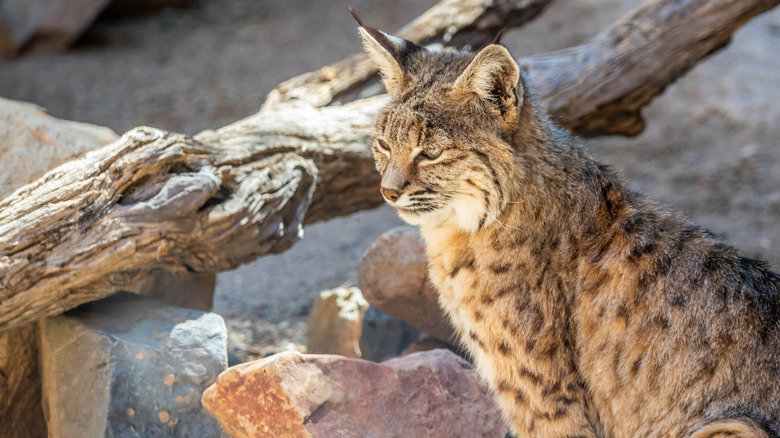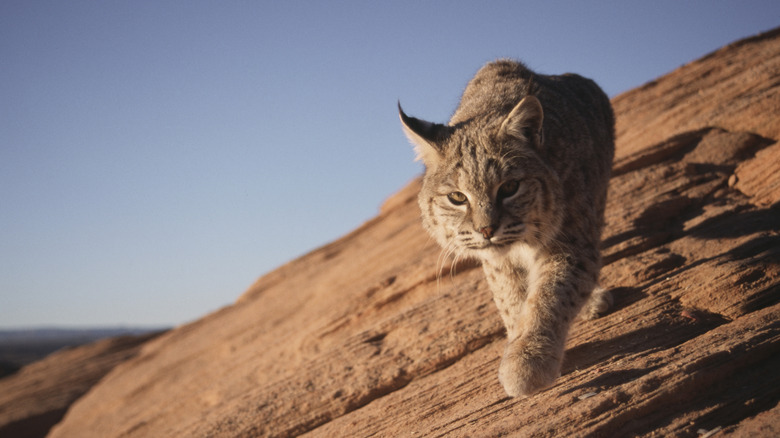What To Do If You Encounter A Bobcat While Hiking
Bobcats are found in more states across the U.S. than any other type of wild cat. In fact, they inhabit every state in the Lower 48 except for Delaware. With an estimated population of around two-and-a-half million animals covering those 47 states, bobcats are the most common feral feline species in the United States.
Given that they are found in such a wide swath of the continent, it should be no surprise bobcats live in a variety of habitats. So, whether you are going on a mountain adventure, hiking through the woods, or adventuring in the desert, you will likely be sharing space with a bobcat. However, that does not mean you are likely to see one. Like their much larger cousin the mountain lion, bobcats are masters of staying out of sight even when they are nearby. Additionally, because of their smaller size, averaging between 12 and 25 pounds, it is much easier for bobcats to conceal themselves.
Beyond the fact bobcats are naturally elusive, they also tend to be scared of people and are not typically aggressive towards humans. But, they can become hostile under certain circumstances and are certainly capable of inflicting harm. Most often, when bobcats do display aggression towards people, it is because they feel threatened. Most attacks on humans are typically a result of rabid bobcats. Those attacks, although rare, do happen. So, it is a good idea to know what to do if you encounter a bobcat while hiking — plus you'll find that these tips follow a similar protocol to coming across a mountain lion.
How to prevent a bobcat attack
Though they aren't often aggressive towards humans, the only sure way to prevent a bobcat attack is to avoid bobcats altogether. Due to their ability to conceal themselves so well, it is possible to hike right past a bobcat without ever knowing it is there. However, the best way to ensure you don't encounter a bobcat, friendly or not, is similar to making noise to avoid bears. Conversation with fellow hikers, an occasional blast on a safety whistle, such as Luxogear's two-pack emergency whistles, or other human sounds will typically send bobcats scurrying well before you reach their location.
Of course, exceptions do occur. Typically, bobcats that don't leave when people are approaching are rabid, sick, injured, or protecting their young. This is when human-bobcat encounters are more likely to take place and can potentially result in an attack. If you do happen to spot a bobcat, the best thing to do is to stop and stand your ground at a safe distance. Do not continue to approach, but do not run, either, as this could trigger an attack response from the feline. If possible, move away or around the animal while maintaining eye contact and keeping as much distance between you as possible. Quite often, the bobcat will run off after getting a good look at a person.
If the cat does not move and you cannot get around it or if it begins coming closer, you should engage in a practice called hazing. This essentially is the same process you should follow if you come across a coyote on a hike. Raise your arms over your head to make yourself appear even larger and make noise by yelling, blowing a whistle, or using a noisemaker. You can also toss rocks and sticks in the animal's direction. If the bobcat is still undeterred and actually attacks, you should fight back using anything you can grab as a weapon.

